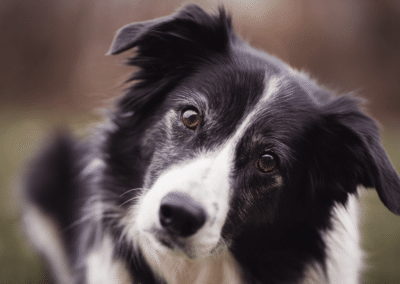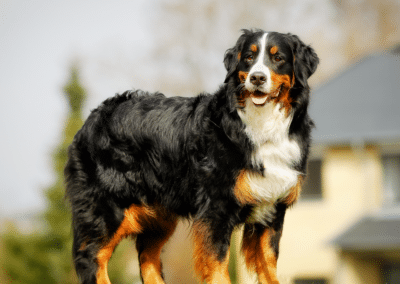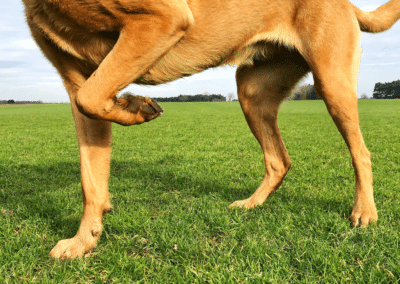The safest way to flying with a small dog is in an approved carrier that can be taken on board and kept under the seat in front of you. Large dogs are required to be placed in the cargo area, which presents a few risks. First, airlines must comply with USDA-APHIS guidelines on allowable temperature limits for animal-holding areas. It has been noted many times that canines have been exposed to extreme hot and cold temperatures in the cargo area. It is a good idea to have the crew check cargo area temps while flying with a dog.
Dogs designated for the cargo area have been put on different flights or not transferred on multiple-stop flights. It is a good idea to make sure you watch your pet being loaded and unloaded, and notify the crew that your pet is in the cargo area. Here’s some tips to keep in mind when flying with a dog!
Airline Restrictions When Flying With a Dog
It should be noted that airlines are not required to carry live animals, and they reserve the right to refuse to carry an animal for any reason. Always check with the airline of choice for any and all restrictions before assuming things will be OK. Airlines will not accept any dogs in their terminals that they have not actually seen. Rules for acceptance include: checking the health and disposition of the animal, visualizing a properly filled out health certificate, and checking for appropriate kennel markings and crate regulations.
Airlines will require that wheels installed as part of a kennel be removed or rendered inoperable prior to transport. This action prevents kennels from rolling during the flight. USDA assigns airlines the final responsibility for determining the safety and compliance of the kennels they accept. Airlines must ensure that they have facilities to handle animals at all airports of transfer and final destination.
If you are traveling by air to bordering countries or international destinations, there may be strict regulations and required legal documents needed for transporting your pet. Certain countries and island destinations require a quarantine period for animals at the owner’s expense. Ask your travel agent or the consul of the country you plan to visit about paperwork and potential quarantines. It is always best to contact the airline carrier and destination country for specific advice on which documents and shots are required. Have two copies of all documents and certificates prepared whenever traveling; keeping one copy with you and one attached to your pet’s carrier.
Tips for safe Airline Travel with Dogs
- Avoid peak travel periods where delays are a good possibility
- Use non-stop flights whenever possible
- Avoid traveling in extremely hot or cold weather
- When you make your reservation, tell the airline that you will have an animal with you.
- Reconfirm with the airline 24 to 48 hours before departure that you will bring your dog.
- Regulations prohibit the drop off of an animal no more than four hours before flight time.
- If your animal is traveling as a carry-on or by the special expedited delivery service, check-in will typically be at the passenger terminal.
- If you are sending your dog through the cargo system, you’ll need to go to the cargo terminal, usually located in a separate part of the airport.
- Carriers need to be marked with your name and address and the name of a person who can be contacted about your pet at your destination, if necessary.
- All carriers must be marked with a “Live Animal” label.
- Carriers should be tall enough for your pet to stand.
- Carriers should be well ventilated.
- Put a cushion or blanket on the crate floor. Attach a water cup and food bowl to the crate door.
- Feed your pet at least 4-hours before flying
- Tips on feeding for air travel
- On the day of the flight, take your dog for a long walk before leaving for the airport.
- At the end of your trip, pick up your pet promptly.
If your pet should turn up missing during transport, immediately speak to airline personnel. Many airlines have computer tracking systems that can trace a pet transferred to an incorrect flight. If there is no report of your animal, proceed with these steps:
- Contact animal control agencies and humane societies in the local and surrounding areas. Check with them daily.
- Contact the APHIS-Animal Care regional office closest to where your pet was lost. Eastern Region: (301) 734-4981, Central Region: (817) 885-6910, Western Region: (916) 857-6205. For further information, call 1-800-545-USDA.
- Provide descriptions and photographs to the airline, local animal control agencies and humane societies. Help can also be sought from radio stations. Leave telephone numbers and addresses with all these locations should you have to return home.
- You can also contact the Missing Pet Network (http://www.missingpet.net). Follow the advice on “How to post a listing.” The MPN is a group of volunteers sponsored by the USDA Animal Care Office.
In case of delays, instructions for feeding and watering your pet over a 24-hour period must be attached to the kennel. This 24-hour schedule will assist the airline in providing care for your animal in case it is diverted from its original destination.
Food and water dishes must be securely attached and accessible to caretakers without opening the kennel. Food and water must be provided to puppies and kittens every 12 hours until they are 16 weeks old. Mature animals must be fed every 24 hours and given water every 12 hours.
Special precautions
- Do not ship pug-nosed dogs or cats such as Pekingese, Chow Chows, and Persians in the cargo hold. These breeds have short nasal passages that leave them vulnerable to oxygen deprivation and heat stroke in cargo holds.
- Give your canine at least a month before your flight to become familiar with the travel carrier. This will minimize his or her stress during travel. In addition, include a favorite toy or item with your scent in the carrier with your pet for comfort.
- Affix a travel label to the carrier with your name, the name of your final destination or contact person, home and final destination addresses, as well as your home, cell, and final destination phone numbers.
- Fit your pet with a collar that can’t get caught in carrier doors. Affix two pieces of identification on the collar – a permanent ID with your name and home address and telephone number and a temporary travel ID with the address and telephone number where you or a contact person can be reached.









0 Comments